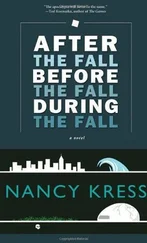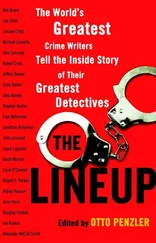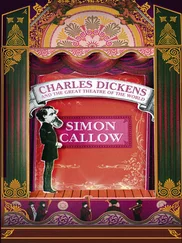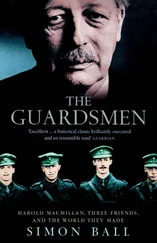Neither George nor Norvill had children, and after Prudence died the estate fell into the hands of her nephew Archie, the only son of her younger brother. He had the house emptied and the household dismissed almost immediately but held on to the property. During the bombing in the Second World War, Inglewood House was used to lodge schoolchildren from the south, as was the nearby Whitmore. The estate’s gardens were already ruined by then, according to the local historian, and further demolished when volunteers dug up some of the plots near the house to plant vegetables.
After the war Inglewood House sat empty. Then, in the 1960s, long after anyone had set foot in it, Archie’s daughter listed the house with a property agent in London along with the furniture Archie had kept, and a good portion of what, by then, had become “unfashionable” art, as well as the books, the textiles and the moth-eaten menagerie of stuffed mammals that had been stowed in their coastal attic. The property was advertised for ten years before a group of investors from the Inglewood area managed to form a Trust and purchase it, hoping to find the capital to restore the gardens as a means of bringing tourists into the village. By the time of the book’s writing in 1976, the estate was falling apart, though the author felt sure — in the way hopeful local historians tended to — that the estate would “soon be returned to its former glory so that it can take its place as a unique representative of the houses of its age.”
When Maureen comes out to clear Jane’s plate, Jane says, “Thanks,” then “Sorry,” because she can tell from the dwindling sounds of the washing-up on the other side of the swinging kitchen door that she is the last of the five guests to have come down for breakfast and that Maureen has been waiting for her to finish up.
“We make the rooms up between noon and two,” Maureen says, the red apron she was wearing over her blouse replaced by a simple grey jacket, a pink shimmer on her lips as if she’s going out. She collects the cutlery and then angles the Inglewood book on the table so that she can see it better. On the cover there’s a black-and-white photograph of the estate house from the turn of the century, the Doric columns of the front portico looming over a half-dozen gardeners in white shirts and waistcoats clipping hedges or hand-mowing a lawn that seems to sprawl endlessly in front of them. “My grandfather was a delivery boy there,” Maureen says. “Never once set foot in the place.” She pauses. “Do you need anything else?”
“No thanks.”
She bends sideways to get a better look out the window behind Jane. “It’s nice weather for your walk to the caves.”
“I might go over to Inglewood House, actually.”
As Maureen heads toward the kitchen, she says over her shoulder, “It’s not open to the public, I’m afraid. They’ve been doing some work there on the weekdays, taking up half the village parking.”
To get a better look at the estate Jane puts her hands up onto the mossy ledge of the stone wall that runs along the field, its flattened top lined with a carpet of lichen that furzes under her fingers. With the toe of her left shoe jammed into a crevice, she tries to haul herself up. On her third go she gets high enough to rest her torso on the ledge, the flat width of stone pushing into her abdomen, her legs dangling and Sam barking and turning circles below. From up here she can see the back of the manor: a row of floor-to-ceiling windows that look onto the gardens, four narrow balconies spaced evenly above those, and then the roof, gabling up to its six chimneys. There are ceramic pots of juniper on the patio stones clustered next to a dozen bags of fertilizer and a wheelbarrow; the air is claggy with the smell of manure and mulch.
When she drops back down onto the grass near Sam, he jumps up on her, his paws dirtying her jeans, tail wagging madly. For a second or two she thinks she will carry on with their walk as planned, but then the image of Leeson and Herschel meeting Farrington in a parlour on the other side of the stone wall pulls at her. This is followed by thoughts of N, by what it might mean — at a time when everything else in her life is going so badly — to find her.
“Right, then, Mr. Coleridge”—she claps, bending down to Sam and hooking one arm under his forelegs and the other under his bum—“you wait up on top. Do you hear me? Wait! ” And once up, having pushed himself off her chest with his back legs, he does wait, all two and a half stone of him balanced sideways on the flat top of the wall, inching down into a sit while Jane hauls herself up again.
Inglewood House, when Jane peers into its windows, is in a strange state, as if mid-restoration. Looking through the tall windows that line what was once a library Jane can discern a half-dozen pieces of furniture covered in dustsheets and stacks of boxes lined up on either side of a large marble fireplace. The far wall of the room is completely taken up with empty bookshelves of gleaming wood. Heavy silk curtains hang on either side of the windows, gold tassels banding the cloth; the ceiling has an ornate set of panels with motifs from the Orient. The library is uncarpeted except for ratty grey runners laid over the hardwood — the kind movers set down at every venue.
Sam whines and Jane glances over to find him sniffing along the flagstone by what would have been the servants’ entrance, beside a trap door for deliveries. The delivery door is flapped open on one side and Sam wags madly as he tracks someone’s coming and going. “I don’t think so, bub,” Jane laughs, pressing her face back to the library window. When she turns to him again a minute later, he has toddled down two stairs and his back end is sticking up out of the entrance. “Sam! Get out of there!”
The steps Sam is sniffing around on are worn in the middle from over a century and a half of use. Crouching down Jane can see that they lead into what looks to be the washing-up part of the kitchen. The open access is a permission she doesn’t think too long about. As a precaution Jane calls, “Hello?”—and taking this as a kind of consent, Sam bounds all the way into the kitchen and around the corner and out of view.
The washing-up area is spare, block-walled except for the plastered area near the pipes, most of which are post-war add-ons that terminate, open-mouthed, near the corner. There are two large metal basins along the far wall, old 1930s things, with wood counters on either side. A plastic Tesco bag is sitting on one of them. Jane goes over and opens it gingerly to find a freshly wrapped sandwich, a bottle of water, a bag of crisps and an apple. Hearing the plastic rustle, Sam trots back from the other part of the kitchen and wags his tail against the metal legs of the basin.
“Shhh,” Jane whispers.
As Jane wanders from room to room, she muses that Inglewood House seems just like any old house that a new owner is moving into — boxes and crates everywhere, workboot prints on the hardwood, cans of paint and drop cloths, a battery-operated radio on the floor of the main hall next to a dustpan and broom. The look and feel of the place is still mid to late Victorian: the rooms dark wood and richly painted, the details around the archways intact, the Gothic embellishments on the banister handrails just as the Farringtons would have had them. The library Jane had surveyed from the window is dark blue, the carved armchairs under the sheets probably Chippendales. Opposite the fireplace Jane lifts a sheet and finds a satinwood cabinet with Wedgwood plaques depicting hunting scenes on its doors. The dining room adjacent still has what looks to be its original wallpaper — a faded grey Asian print sprigged with cherry blossoms. In the study that she imagines would have been George’s, Jane lifts a sheet’s corner to find a dark-red scroll-armed sofa, threadbare where one might have rested one’s arm, and then a mahogany secretary and a worn black leather armchair. Under a sheet stamped with the name of a turn-of-the-century hotel she finds a cabinet filled with glasses and decanters. The boxes and crates in each room bear inventory stickers — ovals stamped FT and bearing a London address, their designations handwritten in marker underneath: GFS 60-122, GFS 123–140 . The system reminds Jane of the work she should be going back to, although what’s here is infinitely more appealing because it seems to be about re-creating, not dispersing, a world.
Читать дальше












